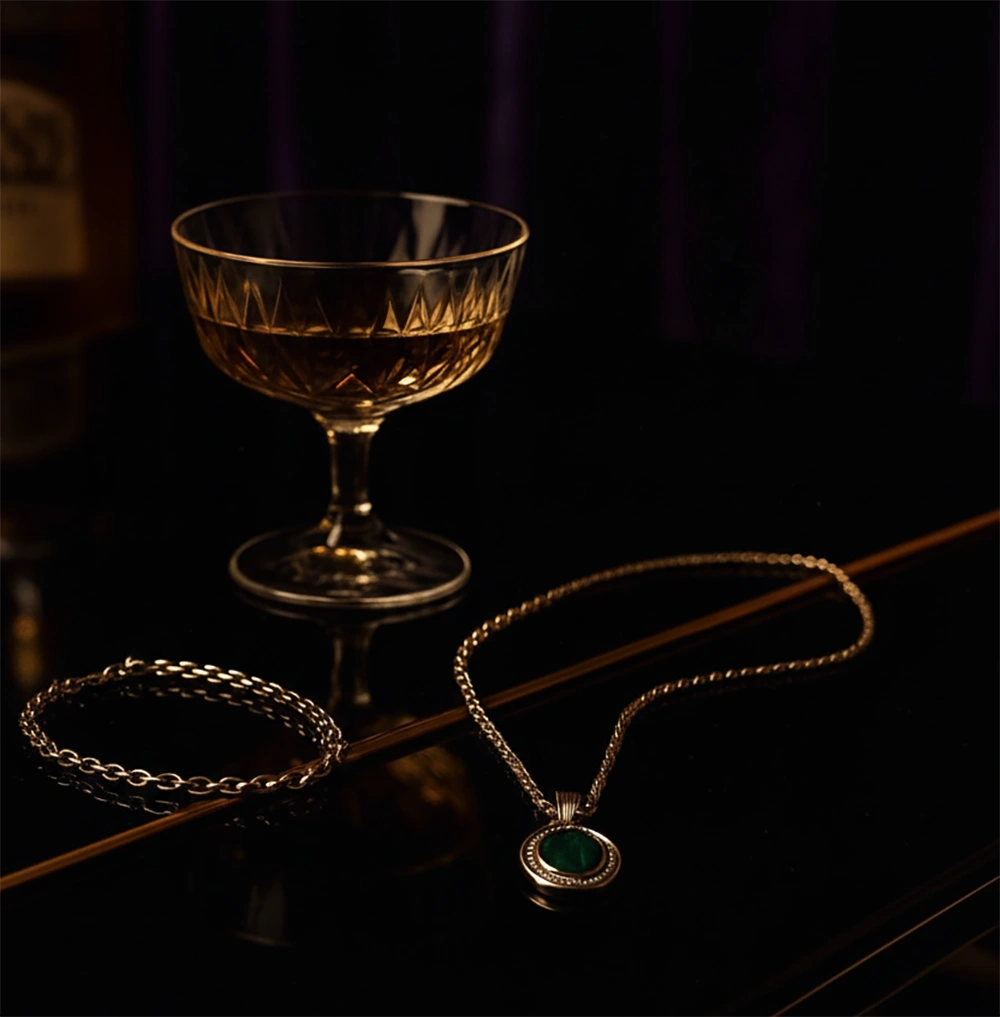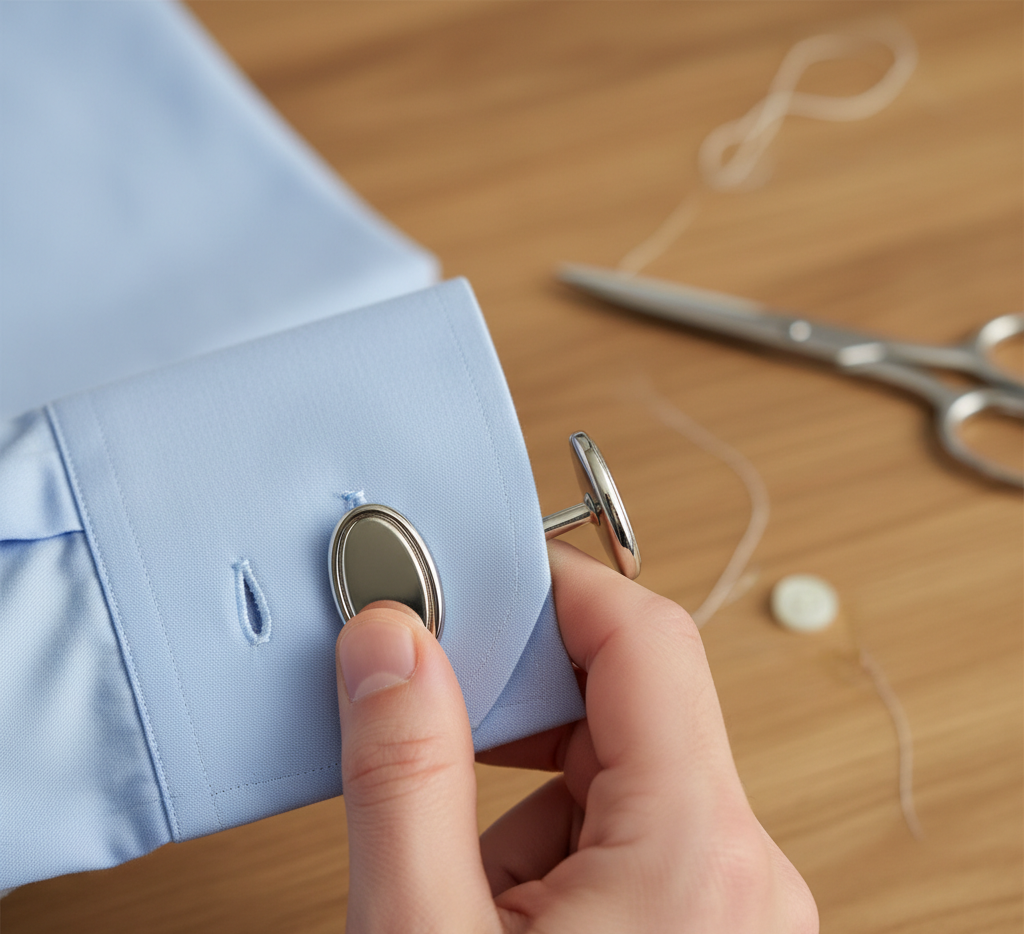
Free UK shipping and returns
250,000+ Happy Customers
Express Next Day UK Delivery
Worldwide Shipping
Subscribe & Get 10% off your first order!
Lifetime Warranty on All Items
Cufflinks aren’t reserved for tuxedos and French cuffs. With a little know-how, you can wear cufflinks with regular shirts (barrel cuffs) and still look polished, modern and unmistakably intentional. This guide covers how to wear cufflinks without French cuffs, the cleanest conversion methods, dress-code do’s and don’ts, and styling ideas you can use right away—whether you’re heading to a wedding, boardroom, or date night.

A cufflink is a small detail with outsized impact. On men’s shirts, the wrist is where movement happens—handshakes, toasts, typing, checking your watch—so people notice. A tasteful pair of cufflinks says you care about finishing touches without shouting. That’s why they’re perfect for business formal, smart casual, and wedding guest outfits—French cuffs or not.
Key benefits:
Yes. Most off-the-rack shirts come with barrel cuffs (single cuffs that fasten with buttons). While these are not designed for cufflinks out of the box, there are several easy ways to make them cufflink-friendly—temporarily or permanently—without buying a new shirt.
If you want a reversible option, cufflink adapters (sometimes called “button-to-cufflink converters”) slot through your shirt’s existing buttonholes and create a small post for your cufflinks.
Good for: travel, quick changes, trying out cufflinks before committing.
How to wear cufflinks without French cuffs (adapter method):
Pros: No damage, no sewing, works with most whale-back or bullet-back cufflinks.
Cons: Not as clean as purpose-made holes; buy decent quality for stability.
Silk knots are elastic “cufflinks” that compress nicely through tight buttonholes. They’re subtle, light, and excellent for double-stacking bracelets and watches without bulk.
Tip: Pick a colour that links to your tie pocket square, or metal tone—gold/silver—of your watch.
If your cuff has two (or more) button positions, you can fold the cuff back on itself to mimic a single French cuff and then align the buttonholes.
Steps:
Pros: Convincing look with the right shirt; zero spend.
Cons: Depends on hole alignment; not ideal with very thick cotton or oxford weaves.
The most seamless option is to ask a tailor to add a parallel hole opposite the existing buttonhole, turning your barrel cuff into a convertible cuff.
Ask for:
Pros: Clean, durable, indistinguishable from purpose-built convertible cuffs.
Cons: Small cost; you’ll need 2–3 days turnaround.
Not all cufflinks are equal on a tighter, single-layer cuff. Choose mechanisms that glide through smaller holes and sit flat.
Material & finish: For versatility, polished sterling silver, brushed steel, or black onyx inlay pairs well with navy, grey and black suiting. Gold tones shine with warm palettes—camel coats, brown shoes, ivory shirts.

If you don’t own a tux shirt, a crisp white poplin with tailor-added holes can work in a pinch. Choose minimal black onyx or mother-of-pearl cufflinks and a thin, elegant form factor. Keep everything else classic: black bow tie, patent shoes, and a clean dial dress watch.
Lean into personality: geometric motifs, heritage emblems, or deep enamel colours (midnight blue, British racing green, burgundy). Pair with a textured tie (grenadine or subtle jacquard) and a well-fitted suit in navy or charcoal.
Pro move: Match metal tone to your tie bar/buckle, not necessarily your watch—consistency at the cuff is what people notice most.
For the Monday-to-meeting look, go for low-shine metals and restrained shapes. A pale blue shirt with navy suit, brown oxfords, and brushed silver cufflinks looks senior without trying. This is where cufflinks with regular shirts feel quietly authoritative.
Yes, cufflinks work with knit ties, unstructured blazers, and even dark denim (if your workplace allows). Use silk knots or matte finishes to avoid looking overdressed. A knitted tie + Oxford shirt + suede loafers + understated cufflinks: easy win.
Can I wear cufflinks with button-cuff shirts to the office?
Absolutely. Use cufflink adapters or silk knots at first. If you love the look, have a tailor add a second buttonhole to create convertible cuffs on your favourite shirts.
Do cufflinks work with casual shirts?
Yes—particularly with oxford cloth button-downs and unstructured blazers. Keep finishes matte and shapes simple.
What cufflink mechanism is best for regular shirts?
For tight buttonholes, whale-back / bullet-back or silk knots are easiest. For long-term use on a tailored convertible cuff, fixed-back feels premium and secure.
Are cufflink adapters noticeable?
Good ones sit discreetly between the cuff edges. Choose metal that matches your cufflink finish and avoid oversized novelty links.
At Illicium London cufflinks we design cufflinks that look refined on French cuffs and converted barrel cuffs alike. Think minimalist silhouettes, heritage-inspired motifs, and premium finishes that sit flat and slide smoothly through tighter buttonholes. Pair a silver-tone set with a navy suit and white shirt for every day; save the onyx inlay for black tie or evening events.
If you’re building a rotation, start with polished silver-tone, add matte gunmetal for modern smart-casual, then introduce a signature motif (e.g., a compass, laurel, or geometric seal) for weddings and special occasions.

French cuffs are timeless, but they’re not a prerequisite for great style. With cufflink adapters, silk knots, clever faux double-cuff folds, or a simple tailor tweak, you can wear cufflinks with the shirts you already own—and look sharper for it. Start subtle, keep proportions tidy, and let the detail at your wrist tell a quiet story of craft and intent.
This website uses cookies to ensure you get the best experience.

Handmade men’s jewellery, cufflinks, and mens accessories — designed with precision, forged from premium materials, and backed by a lifetime warranty.